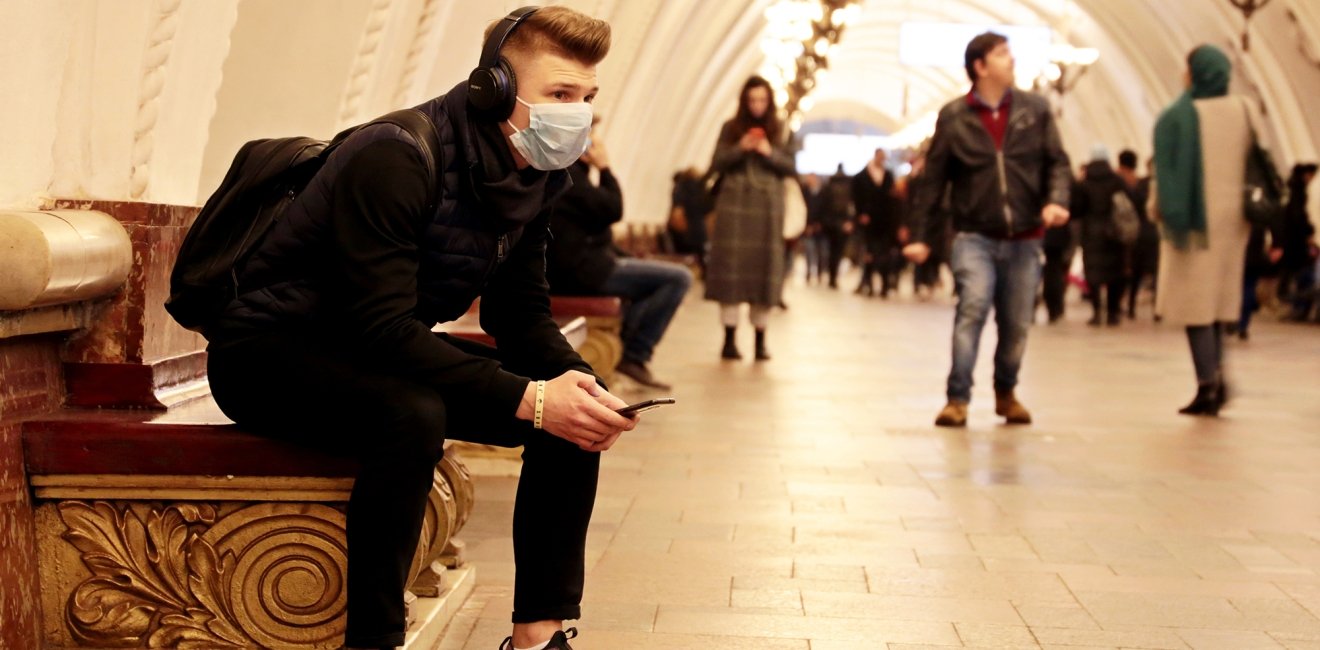
A blog of the Kennan Institute
BY VICTORIA PARDINI
The new academic year is under way in Russia, and universities are facing the challenge of how to reopen to students as the coronavirus pandemic continues.
This problem is especially pronounced in a global higher education market that increasingly relies on international student enrollment, international collaboration, and foreign partnerships to attract incoming students, whose tuition fees contribute to an institution’s bottom line. The question for universities around the world is how to continue this flow of income at a time when borders are closed to foreigners and the pandemic challenges the survival of many university systems.
In Russia, universities closed in March when President Vladimir Putin announced a series of mandatory non-work days in the country. Since then, distance learning has been implemented, and college entrance exams were moved to a virtual format.
Russian Minister of Education Valery Falkov has held several conferences detailing the measures that universities will be taking to combat the spread of infection with COVID-19. All universities will follow strict guidelines, which include emplacing a mask regime, measuring temperatures twice a week, and disinfecting all areas. While most universities did start classes on the Russian Day of Knowledge, September 1, twenty-five universities opted to defer the start of the academic year to a date later in the fall.
Reopening in Russia generally looks similar to the reopening of universities in Europe more generally. However, one component is critical to understanding the future health of the university system both in Russia and globally—the manner in which international students are integrated into the 2020–2021 academic year.
For the past several years, Russia’s Ministry of Higher Education and Science has focused on internationalization. National projects such as the ambitious 5-100 Project, launched in 2012 with the aim of getting five Russian universities among the world’s top 100 by 2020, have emphasized the importance of recruiting foreign scholars and students to Russian universities both to increase the presence of Russian institutions in international rankings and to aid the funding of Russian universities. Last year, about 300,000 foreign students were enrolled in Russian universities, nearly double the 153,000 reported in 2010.
This resurgence can be seen as part of a much longer history of cultural and educational exchange in Russia, and before that in the Soviet Union. In 1956, for example, the People’s Friendship University of Russia was established in Moscow to serve Russian national students and foreign students from Africa, Asia, and Latin America. The university served as a beachhead in Russia’s cultural offensive during the Cold War, promoting Soviet higher education and the Soviet Union more generally.
Today, because of the large number of budget positions at Russian universities, the income realized from foreign students’ tuition is beneficial both financially and in enhancing Russia’s public image. In a recent conversation at Tula State University, Falkov recognized the importance of the university system as an “intellectual corporation” meant to help the regional government pursue economic development. International tuition income has become a critical component of the functioning of this type of corporation.
According to Rospotrebnadzor, the federal service responsible for consumer protection and human well-being in Russia, international students from countries that have closed their borders can return to Russian universities for the 2020–2021 academic year, but face certain administrative and physical challenges. First, they must receive a letter of invitation from their universities for a visa, and then they must provide a negative COVID test result on entering the country and again after a fourteen-day quarantine. Because the border remains closed to international flights between Russia and most countries, distance learning will be in place for students in the event they cannot immediately enter the country.
Although the Ministry of Higher Education and Science has offered general guidance, universities have had to navigate both the optimal distance learning strategy and how to continue to recruit students in a difficult learning climate. As well, space must be allocated for international students who are able to quarantine on campus. That said, students do seem ready to return to their universities if they can. While some have considered deferring enrollment for the 2020–2021 school year, the panic attending the coronavirus pandemic has not entirely stunted the appeal of international education.
Why Russia Needs Foreign Students
Although the Russian response to coronavirus in the higher education sphere is not notable for being either overly restrictive or too liberal, the pandemic has exacerbated and exposed some issues in the industry. Here the twinned issues of advancing Russia’s image internationally while trying to shore up the educational sphere at home during an economic downturn rise to the surface.
Educational diplomacy—one of the most robust tools of soft power the Kremlin can wield—has taken on special importance in light of a series of domestic crises that has rocked the country, including the poisoning of Alexei Navalny and ongoing protests in the Far East. Russia is facing continuing critical scrutiny abroad, and a healthy higher education system that engages warmly with foreigners can only help burnish its public image. Although foreign students are primarily drawn from countries with a historical relationship to Russia, this foreign student population—and even the smaller exchange student population—is a valuable tool in showcasing Russia to an international audience and offering a means for cross-border engagement of citizens. In particular, it is in links with Europe and the United States, not with the traditional allies of Russia, that educational diplomacy and exchange become critical—and the pandemic has significantly narrowed this avenue.
Domestic funding issues add urgency to Russia’s interest in making it possible for foreign students to continue their studies during the pandemic. Reforms introduced over the past decade have meant the closing or consolidation of weaker universities into regional institutions. Regional universities not supported by large-scale federal competitions like the 5-100 Project, however, have relied on the additional income brought in by foreign students. Even smaller regional universities lacking the prestige of the major institutions could attract foreign students interested in living in a foreign country for four years. Newer institutions lacking prestige or a storied past will also likely struggle for survival unless they can boast a strong academic culture. In a system where rankings have been prioritized over a sinewy academic culture, there is room for missteps.
What the Ministry of Higher Education Is Doing
Despite reform-induced school closings and narrowed avenues for cross-border educational exchanges because of the pandemic, the Russian Ministry of Higher Education and Science has attempted to provide incentives for foreign students wanting to study in Russia. In August, a law allowing foreign students to work while pursuing their degree without needing a work permit came into effect. In theory, this new law should encourage both employers and foreign employees to continue cooperation.
It is also worth noting that despite the major issues spotlighted by the pandemic, Russia’s response in the educational sphere has been about on par with that of other nations. Steps have been taken to allow international students to continue their education, both online and eventually in person. Unlike the United States, Russia did not float a plan to strip foreign students of their visas if they did not return to campus in person. The rationale for accommodating international students is obvious: in an industry reliant on tuition fees, it simply does not make sense to alienate one of the largest funding sources.
Still, the pandemic has amounted to a reckoning for the higher education industry. This comes as no surprise. Russian higher education was already teetering on a razor’s edge because of the closures of numerous affiliate universities, paranoia at top levels about the internationalization that universities were compelled to promote in order to attract students, and a narrow focus on creating a prestigious system without much attention to developing a robust academic culture.
It is too early to gauge exactly what the collateral damage from the coronavirus will be for Russia’s higher education industry. However, the pandemic will not have caused this damage. It is just hastening what was inevitable.
The opinions expressed in this article are those solely of the author and do not reflect the views of the Kennan Institute.
Author


Kennan Institute
After more than 50 years as a vital part of the Wilson Center legacy, the Kennan Institute has become an independent think tank. You can find the current website for the Kennan Institute at kennaninstitute.org. Please look for future announcements about partnership activities between the Wilson Center and the Kennan Institute at Wilson Center Press Room. The Kennan Institute is the premier US center for advanced research on Eurasia and the oldest and largest regional program at the Woodrow Wilson International Center for Scholars. The Kennan Institute is committed to improving American understanding of Russia, Ukraine, Central Asia, the South Caucasus, and the surrounding region through research and exchange. Read more

Explore More in The Russia File
Browse The Russia File
Chechnya as a Model of Modern Russia

Russia’s Indigenous Communities and the War in Ukraine

Gas and Power in a Changing US–Russia Relationship

